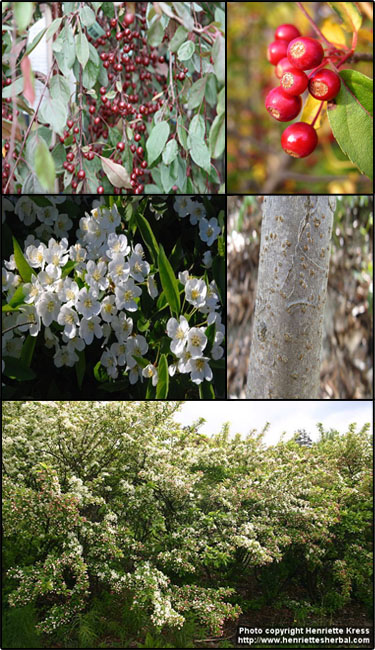Toringo crab (Malus toringo)
 Description: Introduced to North America as an ornamental.
Description: Introduced to North America as an ornamental.Habit: Ranges in size from a shrub to small tree; dense; deciduous or rarely half-evergreen.
Leaves: Simple, opposite, green in color, ovate with serrulate margins.
Stems: Slender and upright.
Flowers: White in color, 5 petals, arranged in corymbs, showy; blooms April through June.
Fruit and seeds: Single, reddish-yellow fruit hangs in clusters from branches, vary in size from 1/4 in diameter up to 3/4 in.
Habitat: Native to Asia. Found along wetlands, areas of well drained soil, sun.
Reproduction: By seed dispersed by birds.
Similar species: Other species of Crabapples (Malus spp.).
Monitoring and rapid response: Effectively controlled using the general use herbicide, glyphosate. It is recommended for foliar applications; while Triclopyr recommended for non-foliar applications. Credits: The information provided in this factsheet was gathered from the Hortipedia plant database and the USDA PLANTS Database.
Individual species images that appear with a number in a black box are courtesy of the Bugwood.org network (http://www.invasive.org).Individual photo author credits may not be included due to the small display size of the images and subsequent difficulty of reading the provided text. All other images appear courtesy of Google (http://images.google.com).
